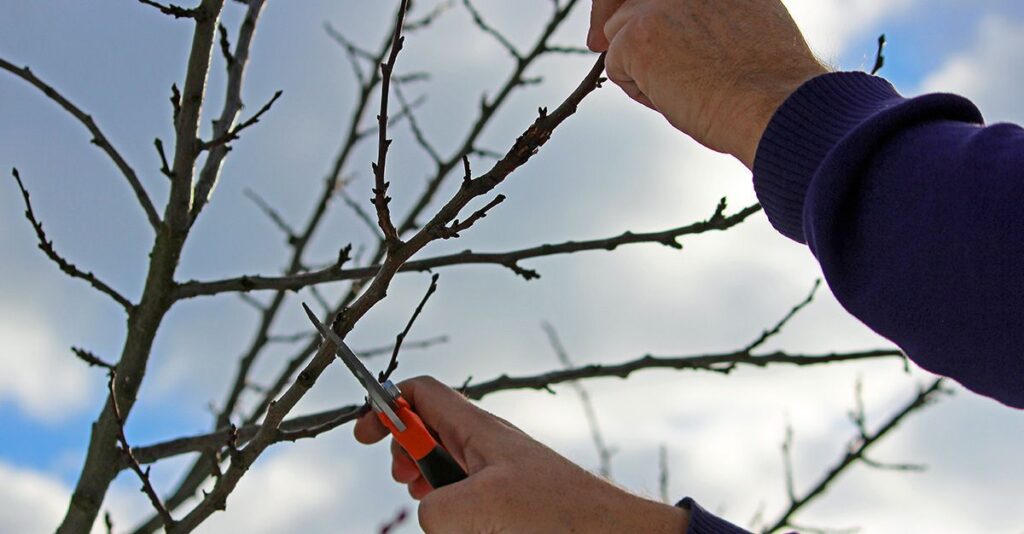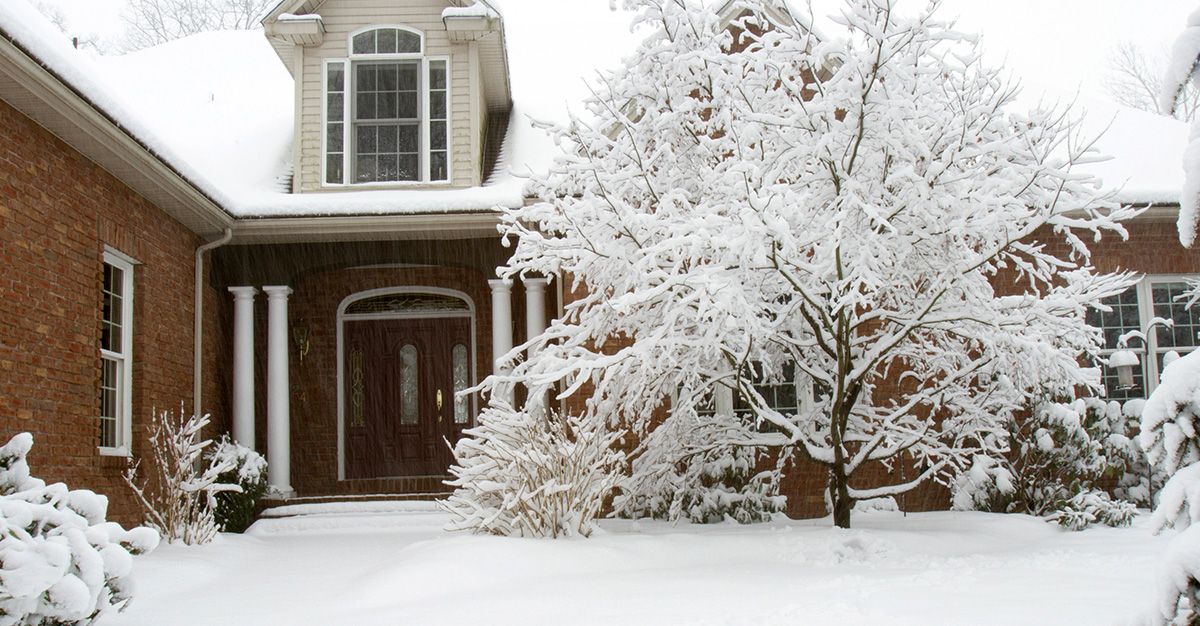The first month of the year transforms the landscape design of your garden into a tranquil haven. Each leaf now wears a shimmering coat of frost, glistening as if sprinkled with diamond dust. The once-bustling chorus of flora and fauna has given way to a serene silence broken only by the soft crunch of frozen grass underfoot. Trees stand like stoic guardians, their bare branches etched against the crisp, clear sky, casting intricate shadows that dance with the low winter sun.
In this frost-kissed realm, the garden reveals a different kind of beauty that speaks of resilience and calm, a stark yet stunning contrast to the verdant lushness of other seasons. This winter garden is a testament to the enduring charm that each season brings, a reminder of nature’s ability to weave magic even in the coldest of times.
Welcome to our blog, dedicated to enhancing and appreciating landscape design in January. This month, gardens transform into serene wonderlands, and we’re here to guide you in making the most of this unique beauty. We’ll share tips for selecting frost-resistant plants and creating winter-themed designs, perfect for both experienced gardeners and beginners. Our goal is to help you create a January garden that’s not just beautiful but also a peaceful retreat. Join us in celebrating the tranquil charm of winter gardening!
Section 1: Understanding The Unique Nature of Winter Landscape Design
In January, the landscape design of gardens takes on a distinctively serene character, highlighted by the dormancy of plants and the elegant bareness of tree branches against a wintry backdrop. This season ushers in a transformation where the vibrant tapestry of spring is more subdued yet equally stunning frost-touched scenery. Delicate frost crystals adorn each surface, making leaves and grass shimmering. The reduced floral activity shifts focus to the structural elements of landscape design – the graceful lines of leafless trees and the artistic frost patterns on branches. In this period, the garden’s allure is quiet and contemplative, offering a unique perspective on the beauty and resilience of nature in winter.
The front yard’s winter aesthetic, shaped by inactive plants and bare branches, offers a striking canvas for landscape design. This minimalist setting highlights structural features like pathways and sculptures, made more prominent without lush foliage. Frost patterns add a magical quality, inspiring creative lighting to enhance the garden’s charm. These elements foster a serene environment for winter gardening activities such as pruning and planning new layouts, incorporating evergreens or winter blooms. This period allows gardeners to focus on the yard’s structure, preparing it for spring’s arrival.
Section 2: Painting With Nature’s Color Palettes
Regarding landscape design, color schemes are essential to producing a charming winter look. The season’s predominant muted tones offer a calm, frost-muted background that captures the understated beauty of the chilly months. Begin by embracing the whites and grays of snow and frost and imagine it as a blank canvas. Accent this with bursts of color from evergreens and berry-producing shrubs for contrast against the white and grey. Evergreen bursts add a robust and bright vitality to the environment, a lovely contrast to these muted colors. During the dormant season, these evergreens stabilize the garden, providing a sense of lushness and visual continuity.
The front yard’s color scheme is also delightfully surprised by the sporadic burst of colors courtesy of vibrant holly berries or the delicate winter buttercups. These hues brighten the area and break the monotony of greys and browns brought by winter. Importantly, learn to accept the subtlety of grass and bare branches, enhancing them with plants that have varied foliage or unique bark textures.Integrating these color schemes in one’s landscape design complements the season and creates a dynamic and visually engaging garden that celebrates the unique qualities of the month.
Section 3: Utilizing Garden Structures
Arbors and trellises, with their intricate designs, become focal points in the cold season, offering beauty and structure. They create picturesque scenes reminiscent of a winter wonderland when covered in snow or frost. For this reason, strategically placed these structures that will make them lead the eye or create intriguing pathways in the garden, guiding visitors through the tranquil winter scenery.
Sculptures, however, add a sense of permanence and intrigue. Positioned strategically, they can catch the low winter light or create captivating shadows on the snow, adding depth and interest to the garden.Consider positioning sculptures where they can be framed by the bare branches or highlighted by the low winter sun.These structures also support winter-climbing plants or evergreens, integrating greenery into the design. Incorporating such elements in landscape design elevates the visual appeal of a winter garden. It adds a layer of interest and character, making the garden a delightful space even in the coldest months.
Section 4: Lighting Up The Winter Garden
Illuminating the front yard is crucial in creating ambiance, particularly during the shorter, darker days. Thoughtful lighting can transform a winter garden into a magical space, enhancing the beauty of frost-laden plants, bare trees, and snow-covered landscapes. Use soft, warm lights to highlight critical features like sculptures, arbors, or specific plants, adding depth and dimension to the garden. Pathway lights ensure safety and guide the eye through the garden, creating a sense of journey and discovery. Strategically place lighting fixtures on the ground and point them up to create dramatic shadows of branches and sculptures.
Additionally, fairy lights in trees or shrubs add a whimsical touch. This intentional use of lighting in landscape design extends the enjoyment of the garden into the evening hours, compensating for the shorter days by creating a cozy, inviting atmosphere that celebrates the unique qualities of the winter season.
Section 5: Creating Textures And Layers In The Front Yard
Start with an evergreen base layer to create a continuous background with rich texture. Mix some big leaves plants and shrubs with fascinating bark textures, such as the roughness of oak trees or the peeling layers of birches. Incorporate decorative grasses into the intermediate layer, as their flowing plumes contrast gently with the more resilient evergreen foliage.
Add ground cover such as creeping juniper or moss for more texture near the soil. Lastly, highlight these layers with winter blossoms or berry-producing plants for color pops. A balance that naturally guides the eye across the garden is achieved by considering each feature’s visual weight and height. Layering these textures will give your landscape depth and variation, making it visually appealing and well-balanced even in winter.
Section 6: Supporting The Friendly Wild-Life
Importantly, consider helpful birds and insects who depend on your frontyard for survival.Gardens are essential habitats in addition to being visually pleasing. Our garden choices can provide essential sustenance throughout the winter when food sources are limited. Adding berries to bushes and seed to plants not only adds color and texture but also gives birds the nutrition they need. Similarly, winter refuges for beneficial insects are produced by considering insect-friendly vegetation and structures, such as leaf litter or log piles.
By promoting biodiversity, these activities improve the ecological balance of the garden. Furthermore, wildlife brings dynamic beauty and fascination to our gardens, creating a dynamic scene that shifts with every passing animal. We construct thriving ecosystems that maintain and sustain local biodiversity over the winter months by incorporating wildlife into our garden design.

Section 7: Maintenance And Upkeep During The Winter
Many unique maintenance tasks are necessary to keep your garden looking beautiful. One critical task is pruning; now is the ideal time to prune dormant trees and shrubs. This activity preserves their vigor and form while also improving the overall design and aesthetics of the landscape. Removing unhealthy or dead branches is vital to help reduce the risk of winter storm damage. Removing snow off walkways and fragile plants is an additional crucial duty. Although a mound of snow enhances the attractiveness, an excessive amount can cause weight and harm to limbs, particularly on evergreens. Additionally, remove any extra snow gently to avoid breaking.
Furthermore, inspect and fix any winter-related damage to trellises or fences. Maintaining these components’ functionality and aesthetic appeal is essential by regularly checking and fixing them. You can keep your garden’s best appearance and prepare it for the following spring by taking care of these January maintenance activities.
The seven brilliant ways we’ve explored blend aesthetics and practicality, ensuring your garden remains a stunning and functional space even in the coldest months. From embracing the muted color palette of winter to considering the needs of local wildlife, each strategy brings a unique touch to your winter garden.
Remember, the key is to see the beauty in the season’s simplicity, adapt to its challenges, and prepare for spring’s vibrant renewal. By integrating these approaches, your winter landscape will survive the harsh weather and thrive, offering a serene and picturesque sanctuary that enhances the season’s charm. Keep these tips in mind, and you’ll find that your winter garden is not just a dormant space but a canvas for creativity and a source of continual joy.
Don’t let the cold months dull your garden’s sparkle. Whether creating a serene color palette, accommodating local wildlife, or preparing your space for spring’s arrival, our expert team is here to help. Contact us today to schedule a consultation and see how we can turn your winter garden into a stunning, season-long showcase.

